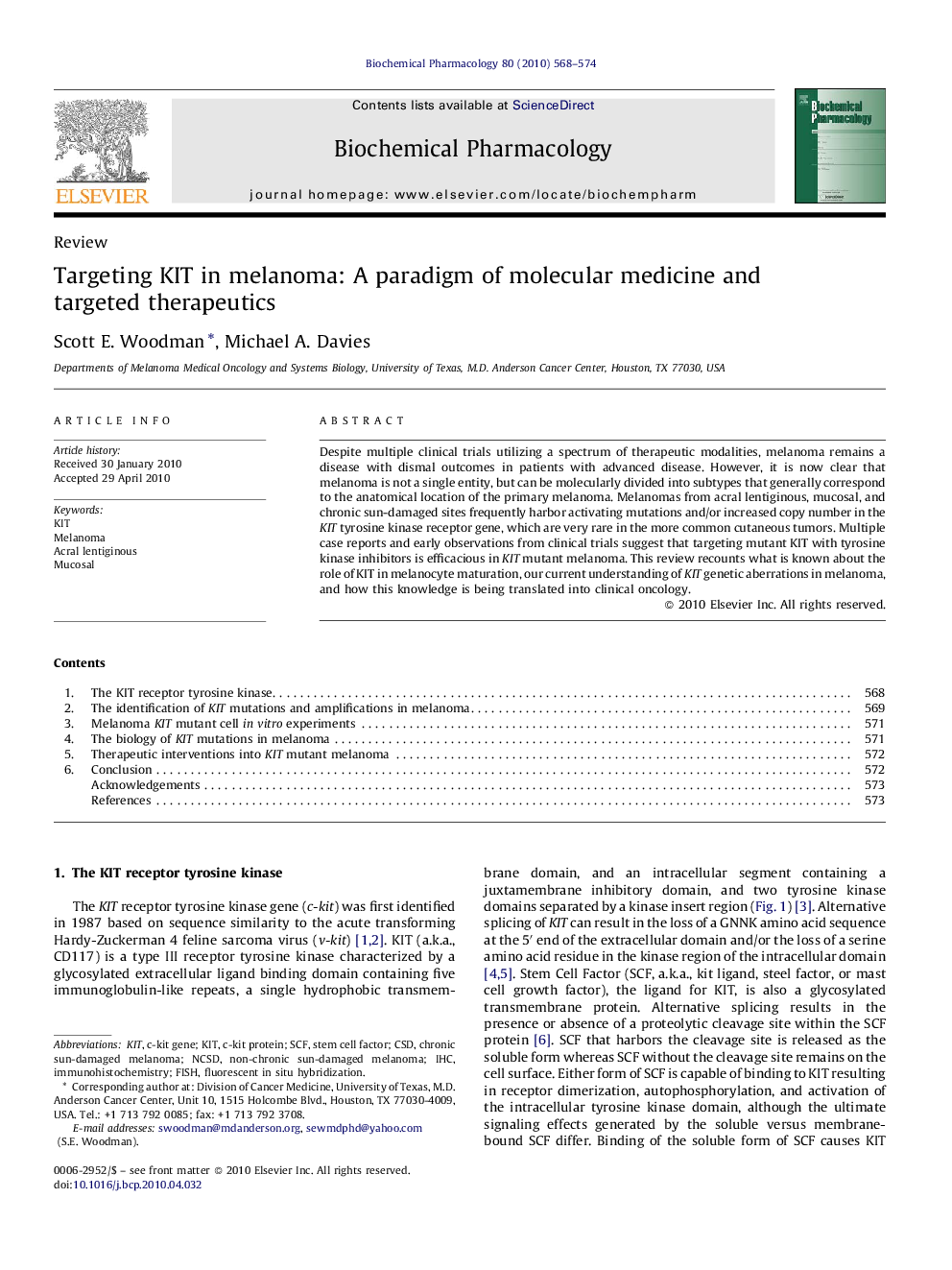| Article ID | Journal | Published Year | Pages | File Type |
|---|---|---|---|---|
| 2513411 | Biochemical Pharmacology | 2010 | 7 Pages |
Despite multiple clinical trials utilizing a spectrum of therapeutic modalities, melanoma remains a disease with dismal outcomes in patients with advanced disease. However, it is now clear that melanoma is not a single entity, but can be molecularly divided into subtypes that generally correspond to the anatomical location of the primary melanoma. Melanomas from acral lentiginous, mucosal, and chronic sun-damaged sites frequently harbor activating mutations and/or increased copy number in the KIT tyrosine kinase receptor gene, which are very rare in the more common cutaneous tumors. Multiple case reports and early observations from clinical trials suggest that targeting mutant KIT with tyrosine kinase inhibitors is efficacious in KIT mutant melanoma. This review recounts what is known about the role of KIT in melanocyte maturation, our current understanding of KIT genetic aberrations in melanoma, and how this knowledge is being translated into clinical oncology.
Graphical abstractFigure optionsDownload full-size imageDownload as PowerPoint slide
